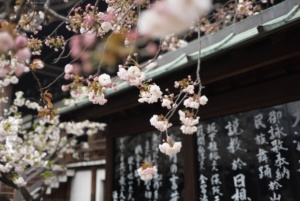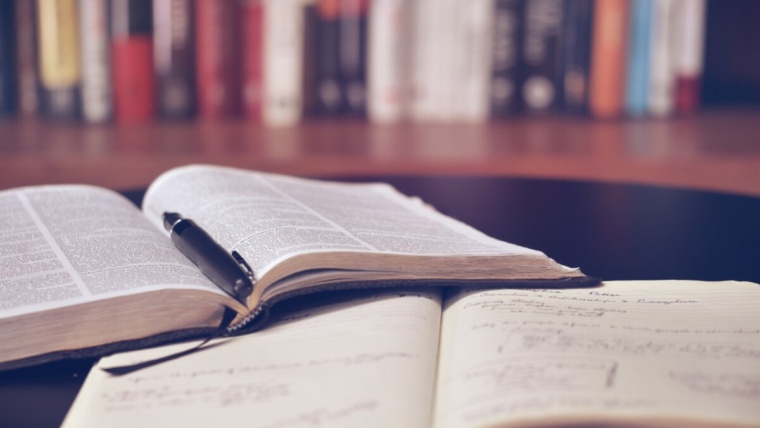
Language has been the most famous means of communication since ancient times. However, over time, language changes due to the influence of culture and technology. The same thing happened in the history of the Japanese language.
Japanese language, also known as Nihongo, is spoken by more than 125 million people worldwide. Despite having some similarities to the Chinese and Korean language, the Japanese language is different from and unlike the two languages.
The Japanese language has gone through various eras until this day. You will see that the dialogue of the characters in The Last Samurai, which is set in 1887, is different from the dialogue of modern Japanese films. Therefore, Pruf Ritz will tell you about the historical development of the Japanese language from time to time.
- Kodai Era (13000BC–600AD)
During this era, the Japanese language was divided into three periods, namely the Jomon period (ca 10000BC–ca 300BC), the Yayoi period (ca 300BC–ca AD300), and the Kofun period (ca 300–710).
During the Jomon period, Japanese people could only interact with a few simple interjections, demonstratives, and nouns. During the Yayoi period, the Japanese language had developed due to the influence of languages from other countries, such as Burma, which at that time was a rice importer to Japan. Meanwhile, during the Kofun period, several writings were found in the Koukuri, Kudara, and Shiragi languages.
- Joudai Era (600–784)
The beginning of this era was marked by the acceptance of Chinese culture in Japanese society. Japanese started to build palaces, create laws, and write books. Further, due to the influence of Chinese culture, Japanese writing changed from kanbun to senmyougaki, kanji which were read in kana. There were also two types of dialects at that time, Yamato and Azumano Kuni.
Several literary works such as kojiki, nihonshoki, and kaifusoo were found in this era. The Kojiki, a collection of myths about the gods of Japan’s four main islands, is the oldest work of literature. Nihonshoki is also a collection of myths written in Chinese kanji. Meanwhile, kaifusoo is a collection of Chinese poems written by native Japanese.
- Chuuko Era (784–1184)
The emergence of katakana and hiragana enriched Japanese literary works, from uta monogatari (poetry), tsukuru monogatari (fictional stories), rekishi monogatari (historical stories), to setsuwa (fairy tales containing Buddhist teachings).
However, nowadays, there is a simplification of writing from 88 letters to 55 letters with 48 seions (character sets), sokuons (double consonants) “t”, and nasal “n”. There is also sound assimilation such as “i on bin”, “u on bin”, “hatsu on bin”, and “soku on bin”.
- Chuusei Era (1185–1333)
The Chuusei era was divided into two, the Kamakura period and Muromachi period. During these periods, Japan always experienced many natural disasters and wars. However, this actually made Japanese people form a new culture in the form of drama.
Spanish and Portuguese came to Japan and influenced the development of the Japanese language. As for grammar, there was a mixture of Wago and Kango languages as seen in the Heike Monogatari book.
- Kinsei Era (1603–1867)
In the Kinsei or premodern era, there was a closed state policy to defend Buddhism from Christianity. The rapid development of cultural arts, including literary works, is one of the impacts of this political system.
Haiku or traditional Japanese poetry has become a very popular literary work to this day. Haiku originated from the art of haiku-renga. This literary work makes people more familiar with grammar and new vocabulary.
- Kindai Era (1868–1945)
At that time, the Japanese government realized that their country was left behind by Western countries. Therefore, the Japanese government incorporated a lot of Western cultures and encouraged developments in the field of literature. This also had an impact on the use of language and mass media.
- Gendai Era (1946–1989)
The use of language at this time is heavily influenced by America. The pronunciation and writing styles that used to refer to kango kanji changed to Western pronunciation styles. The refined language for Tenno that existed during the Joudai era was omitted. In addition, there was a significant reduction in the use of male and female dialects among adolescents.
That’s the history of the Japanese language that you need to know, especially if you intend to use it as a provision for language research. If you have difficulty translating the Japanese language in any form of document, Pruf Ritz will always be ready to help you.


